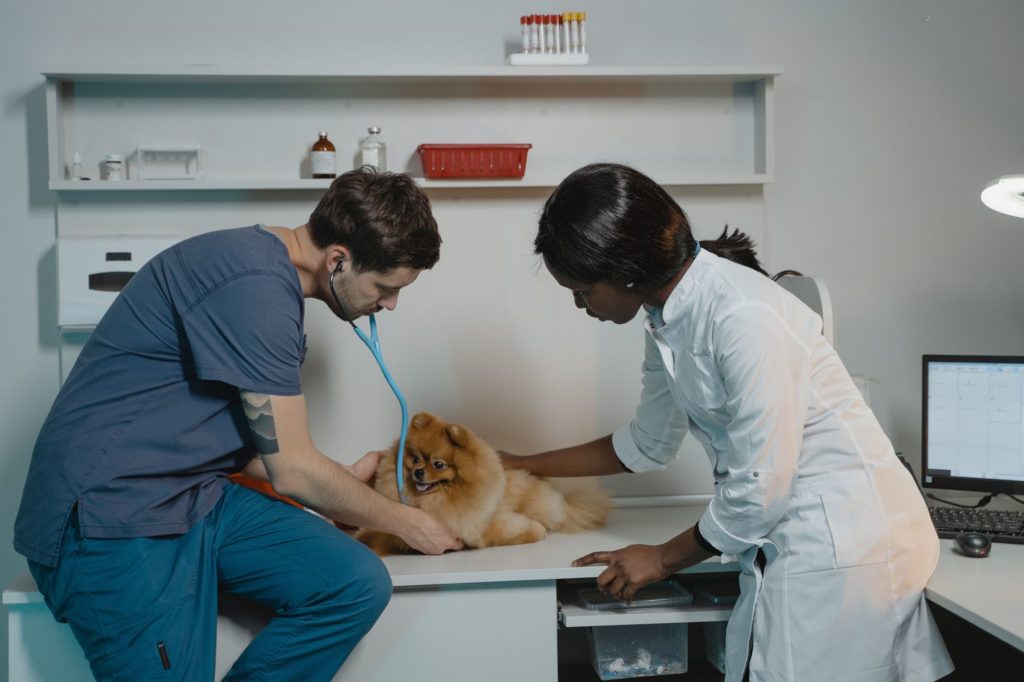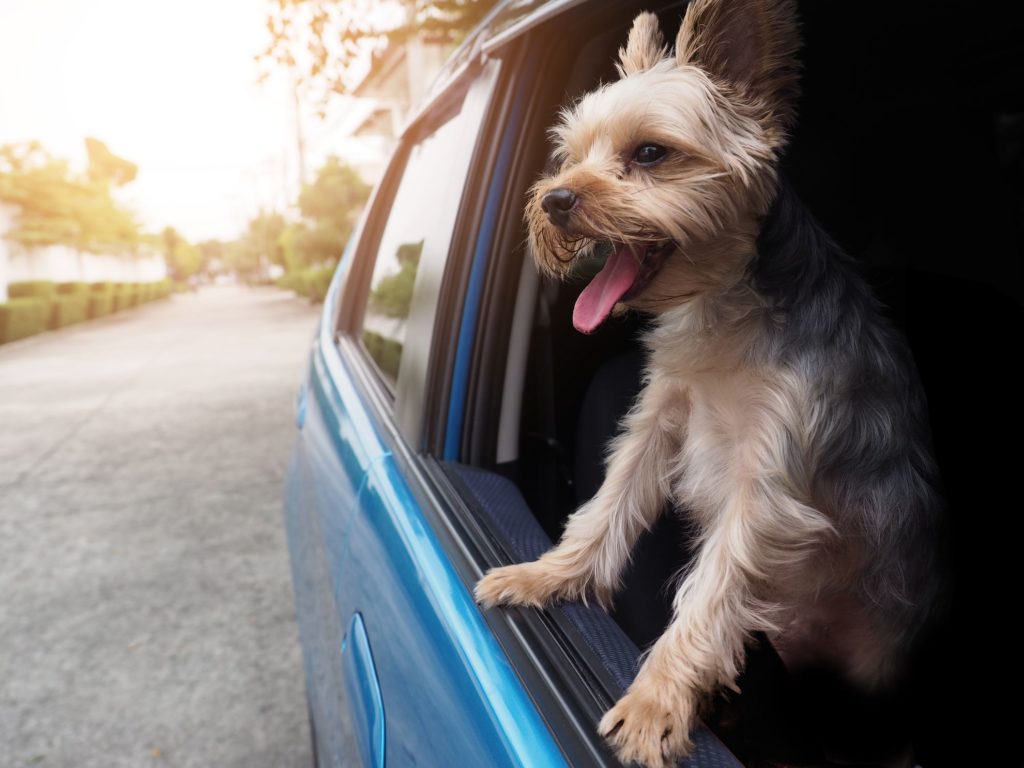Posted in
Moving Tips&Tricks
on October 4, 2021

Julie Grace
Originally from The Golden City, Julie has explored the ins and outs of moving and has written all the tips down.
Best Tips for Long-Distance Moving With Pets
Relocation is a challenging process that changes your life from scratch. So, it’s completely normal that you feel a bit anxious about it. Now, if you’re moving with pets, as well, that’s a whole other topic, and you need extra preparation for it. It’s essential because although they don’t understand us, they can feel something’s going on. That is when you step in with our tips that will help you organize for travel, no matter if your special family member is a dog, cat, bird, or reptile.
Do Pets Know When You Are Moving?
The relocation process is stressful and it can take most of your energy. If you think animals don’t realize something big is about to happen, you’re wrong. While making a to-do list of tasks that have to be done, you should also think about how to move pets across the country. Do everything you can to spare them from stress because they just can’t understand this change will do them good.
It’s a challenging task for your dogs, cats, and any other species and it’s your job to make the whole process a bit less painful by following the useful advice we prepared. Not only will you help your furry friends, but it will be easier on you, as well.

Did you know that a dog can hear when you're happy or sad
How Do You Move Long Distance With a Pet – Organize Everything in Advance
Once the reasons for the move become real, you should start planning a move to another city. If it’s your first time moving out, then you need some relocation tips to make the whole process smooth. Especially when it’s not only you that has to move, but there’s also the question: how do I move my pet to another state?
There are many things you have to take care of, but safety should be your top priority. Having safe travel plans for you and your furry friends is a priority, and only then can you think about other relocation mistakes to avoid.
Contact Professional Long Distance Movers Near You and Get Some Help
Once you decide where to live and get all the house hunting tips, you have to deal with practical things. For example, what to get rid of when relocating and what to keep. With all this to keep in mind, other tasks can become just too overwhelming for some of us.
That’s why you should contact professionals with reliable long-distance moving services. That means you won’t have to worry about packing fragile items or any other object from your household. There are packing services with the option of a storage facility that every reputable relocation company should offer.

Professional movers will give you a helping hand in this challenging process
One of the First Moving With Pets Tips is to Choose the Best Transportation Method
Once you ensure the professionals will provide you with relocation insurance for your belongings, you should move on to the question of transportation. It can be pretty tempting to let the professionals transport your car since it’s easier than driving. However, you need to think about your furry friends and what’s best for them.
Of course, the exact mode of travel will depend on many factors. The transportation can’t be the same for a small dog and a six-foot boa. You shouldn’t neglect this kind of thing when it comes to figuring out how to move with pets.
In the Car With You Is Where Your Four-Legger Friend Will Be the Safest
Other factors you should include are the distance of the trip and the temper of your animal. If possible, you should always go with the car travel option. It’s because it’s much safer and the animals will be near you, which will keep them calmer.
However, if you can’t avoid flying, make sure it’s a commercial flight and not a cargo one. The comforting thing is that in the past few years, flying with animals has become much safer and easier.
Avoid Putting the Carrier in the Back of a Moving Vehicle
Relocating your pet to a new home means you have to make sure it feels comfortable during transportation, whether it’s a cat, dog, or any other pet. They should never be in a truck bed or cargo area of a van. Instead, be sure your four-legged friends are traveling with you. That way, they can’t get hurt, and even if something happens, you’ll be aware of it immediately.
If you want some great ideas on how to divide front and back seats when traveling with dogs, watch the video below.
Gather All the Documents and Get Them in Order
Having all documents organized at home comes in quite handy when you decide to move. The same goes for your animals’ documentation and paperwork. So before you start preparing for movers, be sure to contact the vet and get copies of all the certifications. Also, before the big move to the new home, take care of the following stuff:
- Update the microchip and collar tag,
- Check which animals can move to the state you chose,
- Refill prescriptions,
- Have all the medical records on hand.

Take care of your pet and get them checked at least once a year
Pack Light and Keep the Essentials Near
Keep in mind there are many things you can forget to do when it comes to the relocation process. One of the most tedious tasks is definitely packing. We all know how chaotic it can get when you start decluttering and suddenly find the whole house covered in piles of things you’ll pack and those you’ll toss.
So between figuring out how to pack dishes and other packing tasks, ensure you keep the pet away from all that. It can be strange and overwhelming for you to see your house in boxes and bubble wrap. Imagine how it would be for your furry friend.
Prepare a Safe Room to Ease the Whole Transition on You and Your Furry Friends
When professional movers come and start packing a relocation truck, it’s best if your cats or dogs aren’t a part of the whole process. There will be too many unknown people, and a bunch of things will be happening, so why put them through the stress? That’s why you should create a safe space – it can be a separate room. Put all of their favorite toys in there, water, and some snacks. That will help them be much calmer for the road trip that is ahead of them.
Make the Carrier Visible When Moving Pets Across the Country
If you have never traveled before with your furry member of the family, then they probably didn’t get a chance to be in the carrier or crate a lot. If that’s the case, you might want to introduce the carrier and get your cat or dog comfortable with it. It’s essential to do it a few weeks before the big day.
According to ASPCA, the best way of doing it is to put some of their favorite food inside the open crate and get them used to eating most of the meal there. You can also try carrying your furry friends in them inside the house and see how they feel. And last but not least, include the carrier in your everyday playtime.

Ensure you introduce your cat or dog to the crate before the big da
Adjust the Route for Your Animal Friend
Getting your furry friend get used to the car and traveling in it is a challenging task. Now, if a pet is generally nervous in the vehicle, then you should do everything to arrive at the new destination as soon as possible. So avoid long and too frequent stops and breaks.
However, every animal is different, and if it needs a break to take a walk, then you should take that into consideration. Also, if the trip is too long, then consider booking a hotel on time that allows you to stay with your furry friends as well.
Avoid Feeding Your Pet a Couple of Hours Before the Trip
Traveling on an empty stomach is always a good solution, especially if a four-legged friend is nervous before the trip. That way, you won’t have to worry about them having an accident during the trip that could extend the whole trip.

Follow these simple steps and ensure a move without any surprises
Prepare the New Home for Your Furry Friend Before the Moving Day
We all need some time to adjust to the new environment. One of the things to do is to prepare your new home before the move. Be sure you know how to clean an apartment, including the room your furry friend will spend the most time in right after the move.
There aren’t so many methods to introduce the unknown place to your furry friend. You just have to let it have the first contact with the things you brought from the old place. If you don’t, it could be too stressful, and the little fellow could have some serious problems getting to love or getting used to the future place.

It will take about three weeks for dogs to get used to the new environment
What Is the Best Way to Move With Pets and Deal With the Animal’s Anxiety After the Move
Even once the professional movers unload the last box out of their truck and leave, the whole process isn’t over yet. There’s still unpacking and getting to know the neighborhood. All that can cause depression after the move, so just keep in mind all the benefits of this relocation to fight those negative thoughts. But how will this change affect you and your furry member of the family?
The biggest challenge will be to explain what’s going on to them. Simple – with love and cuddling. You’ll have to be around more than you used to be and show them nothing essential has changed (except the surroundings).
Tips for Calming Down Cats and Dogs
Relocating to a future home could awaken the fear of the unknown and lead to anxiety about moving out. In that case, you can always talk to someone to assist you in getting through this challenging situation. This is a clear solution when it comes to humans, but what about animals and their feelings? What can a human do to make them feel better about this change? Here is some stuff you can do:
- Whether you have a cat or a dog, be sure to give them their space (a cat needs space to hide) and time,
- Keep the same routine as they had in the old place (feeding and walks),
- Play with them more than usual since they’ll probably be more anxious after the move,
- A dog will probably need more walks a day (start with few shorter ones so that the dog can get to know the environment),
- Ensure your cats can’t escape the house in the first period,
- When you notice a cat is getting frustrated from being inside, you can let it out (assuming you have an outdoor cat),
- If the anxiety isn’t going away, get your furry friends to the vet for professional help.

Taking care of cats or other animals after the move is a process you just have to get through
Give Yourself and Your Furry Friend Time to Adjust to the New Home and Environment
After you’ve learned everything about how to handle a move with the furry friend, there’s nothing left to do but start preparing for the big day. Although it will be a challenging period, keep in mind that this relocation will do you good. There’s no space for negative thoughts because you know our furry friends can sense everything.













